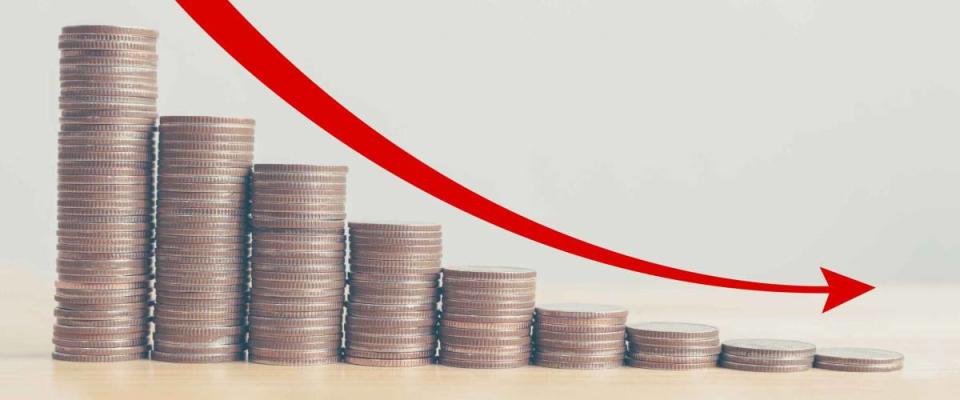The interest on your savings stinks — here are your best options

The pandemic has caused interest rates to plummet, which is great news — for some people, some of the time.
Borrowers are amazed that they can take out hefty personal loans at dirt-cheap rates, or are able to refinance their mortgages and save hundreds of dollars a month in interest.
But if you’re just trying to hunker down, and save and grow your money, this environment is brutal. Many popular saving and investing options are closely tied to interest rates and are looking downright grisly in 2020.
It doesn’t seem things will change any time soon. Last month the Federal Reserve said it plans to keep interest rates near zero until at least 2024.
In the meantime, it’s worth re-evaluating your investment choices to see whether you’re making money or just treading water. Here are some vehicles that are falling short today and some that are holding their value.
Investments that have lost their luster

1. Certificates of deposit
CDs have been popular for a long time with skittish investors.
They’re guaranteed to turn a profit and typically provide higher yields than a bank account, but you have to be willing to let the bank hold on to your money for a while. It can take anywhere from 30 days to 10 years before a CD matures, and there are penalties if you withdraw early.
Less than a year ago, the average 60-month CD offered a modest return of 1.01% APY. Today, you’re looking at a less-than-stellar 0.36%, according to the FDIC.
That difference can really add up:
If you invest $10,000 in a five-year CD at 1.01% APY, you would earn $515.30 in interest.
But if you invest $10,000 in a five-year CD at 0.36% APY, you would earn just $181.30 in interest.
2. Treasury bonds
T-bonds are about as safe as an investment can get. You’re essentially loaning money to the U.S. government to help it run the country, netting a little interest for your trouble. These bonds come with maturities of 10 to 30 years.
During periods of economic turmoil, like the pandemic, many investors flock to the safety of bonds. But all that demand drives the yields down, as the government doesn’t need to pay a premium to attract buyers.
The yield on 10-year Treasury bonds is closely watched as an indicator of investor confidence. Even mortgage rates follow its lead — resulting in today's lowest-ever rates on home loans.
Since March, the 10-year Treasury bond has typically yielded less than 0.75% interest, compared to 1.75% or higher in late 2019.
3. Savings accounts
Even during the best of times, dumping your money in a traditional savings account won’t net you a decent return. The pennies you earn will be quickly obliterated by inflation.
After the Fed dropped interest rates near 0%, there’s even less rationale for stashing your savings in a regular savings account.
Today the industry average is about 0.05%, and many basic accounts pay only 0.01%.
So where can you put your money?

1. CD ladders
Instead of investing into one CD for a set term, you might consider splitting your money into multiple CDs with different maturity dates. As each matures, you can decide whether to cash out or reinvest into a new CD.
Why is this helpful? Well, even though interest rates stink right now, eventually they’ll rise again. If you have CDs maturing at different times, you’ll always have some of your money available and ready to reinvest whenever better rates come along.
Having a ladder of CDs also protects you from triggering early withdrawal penalties if you need access to cash during the recession. If you’ve spaced out the CDs evenly, you shouldn’t need to wait too long before one matures.
You can also look into bump-up or step-up CDs, which allow you to take advantage of rising rates with a one-time option to “bump” into the higher rate. Bump-up CDs could make sense if you expect interest rates to rise soon, but the current low-rate environment could last years, and these types of CDs start with a lower yield than standard CDs.
Creating a plan on your own can be complicated, but you can always turn to a certified financial planner professional who can work with you to build a personalized plan.
2. Preferred securities
These are hybrid investments that share features of both stocks and bonds, with a risk level somewhere between the two. Some preferred securities generate income in the form of interest, while others generate income in the form of fixed dividends.
Preferred securities tend to offer more attractive returns than other fixed-income investments and are less sensitive to interest rate changes.
That said, it’s not immune. If interest rates rise, and Treasury bond yields increase, demand for preferred securities will decline, reducing their value as investors shift back to even safer investments.
Many preferred stocks are also callable, meaning that a company can retire the shares by paying investors’ money back. If that happens, you’ll no longer receive your regular payments.
3. High-interest savings accounts

Even the best savings accounts aren’t going to make you rich, but their flexibility makes them an important part of your financial arsenal. For instance, you can use a savings account to hold money you need quickly in an emergency.
So if you’re going to park some of your money in a savings account, make sure it’s a high-yield savings account.
Don’t just look to your local bank. Online financial institutions often have better rates, since they don’t have to cover the costs of a physical location.
Just look at the difference:
If you were to put $10,000 into a traditional savings account with a 0.05% interest rate, you’d earn just $5 in interest over an entire year.
But if you opened a high-yield savings account with a rate of 0.40%, you would earn $40. Not a king’s ransom, but certainly a lot better.
4. Real estate investment trusts
REITs trade like stocks and offer ordinary people the opportunity to invest in real estate without spending millions to own and operate an actual property.
You’ll receive payouts through quarterly dividend distributions and will get a portion of an asset’s appreciation when its investment term ends.
With the Fundrise platform, for example, you can become a real estate investor with as little as $500.
5. Exchange-traded funds
An ETF is a bundle of stocks, bonds or other investments pulled together with money from a large number of investors. When you invest in an ETF, you own a little piece of each asset that's part of the bundle.
You’ll have access to some of the growth potential of stocks, but the inherent diversification of ETFs will help mitigate your risk in this rocky environment.
Plenty of apps make it easy to buy and trade ETFs. For example, Acorns lets you get started with just your spare change, and Robinhood not only offers ETFs but also allows you to buy fractions of individual stocks.
